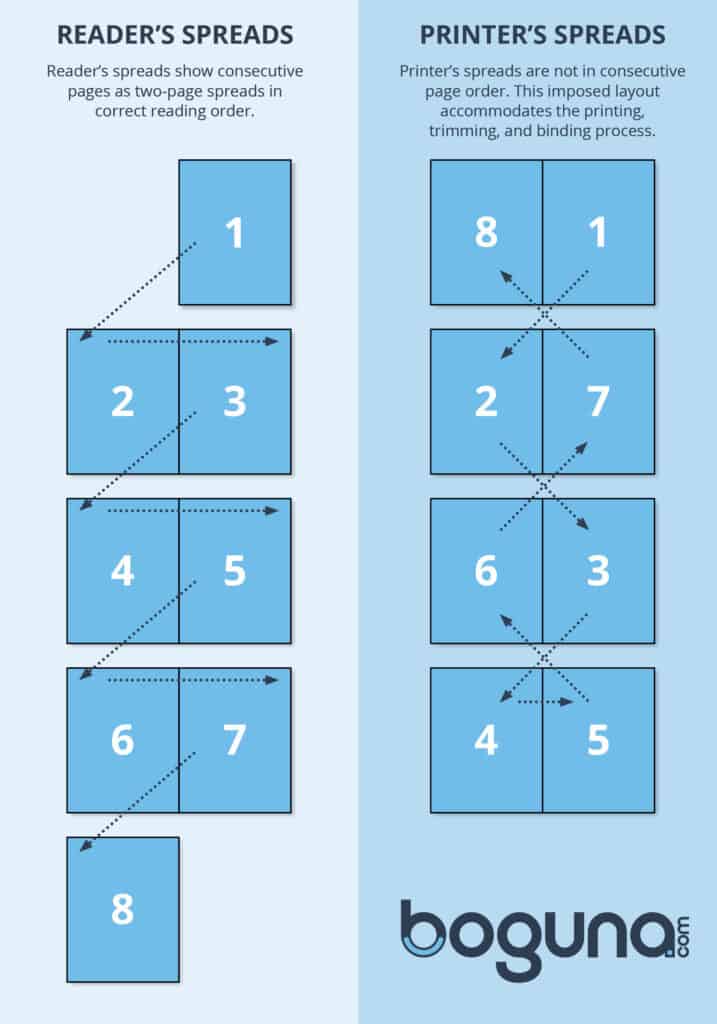What are Printer Spreads (vs. Reader Spreads)

What is the difference?
Reader's Spreads
Think of reader's spreads as the way you naturally read a booklet. When you open it, you see two pages side by side, exactly how they're intended to be read. If your booklet is a storybook, the reader's spread is page 1 and 2 together as you first open it, then 3 and 4 as you turn the page, and so on. It's the natural flow of reading from the beginning to the end.
Printer's Spreads
Now, printer's spreads are a bit like solving a puzzle. When you print a booklet, the pages are not printed in the order they are read. Instead, they are arranged in a specific way so that when the entire sheet is folded and cut into a booklet, all the pages end up in the correct order. For instance, in a 16-page booklet, page 1 might be printed on the same sheet as page 16, and page 2 might be with page 15. This ensures that when the sheet is folded and assembled into a booklet, the pages are in the right order for the reader.
In summary, reader's spreads are about the natural, intended reading order of the pages in a booklet, while printer's spreads are about arranging pages in a special order for printing, so everything comes together perfectly in the final product. It's like the difference between reading a story in order and assembling the pages of the story so they can be bound into a book.




